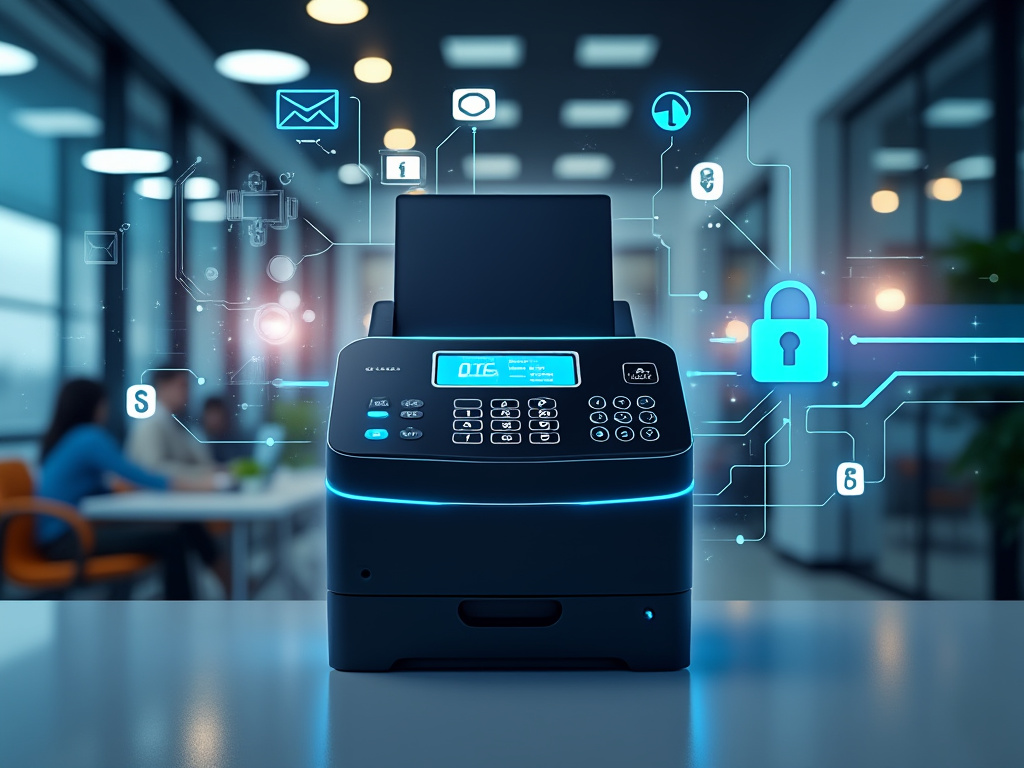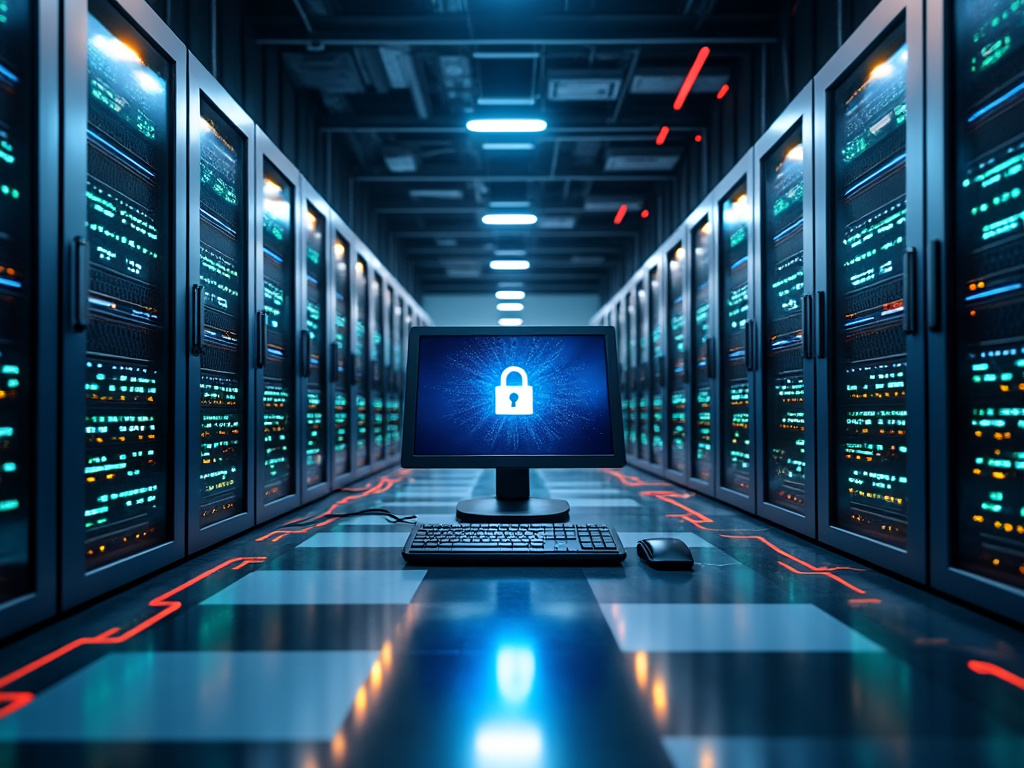Online Faxing Security Best Practices: Keeping Your Data Safe in the Digital Age

Learn essential security practices for online faxing. Protect your sensitive information with encryption, secure authentication, and smart data management techniques.
9/12/2024
In today's digital world, where data breaches make headlines almost daily, it's crucial to ensure that your online faxing is as secure as possible. This guide will walk you through the best practices for secure online faxing, whether you're a casual user or a business handling sensitive information.
Why Fax Security Matters
Before we dive into the nitty-gritty, let's talk about why fax security is so important. You might be thinking, "It's just a fax, what's the big deal?" Well, faxes often contain sensitive information like:
- Financial data
- Medical records
- Legal documents
- Personal identification information
In the wrong hands, this information could lead to identity theft, financial fraud, or other serious consequences. Plus, if you're in an industry like healthcare or finance, you're likely subject to regulations that require you to protect this information.
For a refresher on why faxing is still relevant in 2024, check out our Ultimate Guide to Sending Faxes Online in 2024.
Key Security Features to Look For
When choosing an online faxing service, make sure it offers these essential security features:
1. End-to-End Encryption
This is the gold standard of online security. It means your fax is scrambled into unreadable code from the moment it leaves your device until it reaches its destination. Even if someone intercepts it along the way, all they'll see is gibberish.
2. Secure User Authentication
Look for services that offer:
- Strong password requirements
- Two-factor authentication (2FA)
- Biometric authentication options (like fingerprint or face recognition)
3. Secure File Storage
Your faxes should be stored securely in the cloud, protected by:
- Encryption at rest (meaning the files are encrypted even when they're just sitting in storage)
- Access controls to limit who can view your faxes
4. Compliance with Regulations
If you're in a regulated industry, make sure the service complies with relevant standards like:
- HIPAA for healthcare
- PCI DSS for financial services
- GDPR for handling data of EU citizens
5. Audit Trails
Look for services that provide detailed logs of all faxing activity. This helps you track who accessed what and when, which is crucial for both security and compliance.
For a comparison of online faxing services and their security features, check out our Top 10 Online Faxing Services Compared article.
Best Practices for Secure Online Faxing
Now that you know what features to look for, let's talk about how you can use these tools effectively to keep your faxes secure.
1. Use Strong, Unique Passwords
I know, I know, you've heard this a million times. But it's still one of the most important things you can do to protect your account. Here are some tips:
- Use a mix of uppercase and lowercase letters, numbers, and symbols
- Make it at least 12 characters long
- Don't use personal information like birthdays or pet names
- Use a different password for each of your online accounts
Pro tip: Consider using a password manager to generate and store strong, unique passwords for all your accounts.
2. Enable Two-Factor Authentication
Two-factor authentication adds an extra layer of security by requiring a second form of verification beyond your password. This could be:
- A code sent to your phone
- A fingerprint scan
- A hardware security key
Even if someone gets your password, they can't access your account without this second factor.
3. Be Cautious with Public Wi-Fi
Sending sensitive faxes from the local coffee shop's Wi-Fi is about as safe as shouting your credit card number in a crowded mall. If you must fax on public Wi-Fi:
- Use a VPN (Virtual Private Network) to encrypt your internet connection
- Wait until you're on a secure network if possible
4. Keep Your Software Updated
Those annoying update notifications? They're actually important for security. Outdated software can have vulnerabilities that hackers can exploit. Make sure to:
- Keep your operating system updated
- Update your online faxing app or software regularly
- Keep your web browser up to date if you're using a web-based faxing service
5. Double-Check Recipient Information
Sending a fax to the wrong number isn't just embarrassing – it could be a security breach. Always double-check the recipient's fax number before hitting send.
6. Use Cover Sheets
A cover sheet acts like a security guard for your fax. It should include:
- The intended recipient's name
- A confidentiality notice
- Instructions for what to do if the fax is received in error
7. Manage Access Carefully
If you're using online faxing for business, be careful about who has access to your faxing account:
- Only give access to employees who need it
- Use role-based access control to limit what each user can do
- Revoke access immediately when an employee leaves the company
8. Regularly Review Your Fax History
Most online faxing services provide a log of your faxing activity. Regularly review this to:
- Ensure there's no unauthorized activity
- Identify any unusual patterns that could indicate a security issue
9. Securely Dispose of Digital Faxes
Just like you'd shred a paper document, make sure to securely delete digital faxes when you no longer need them. Many online faxing services offer options for automatic deletion after a certain period.
10. Educate Your Team
If you're using online faxing for business, make sure everyone on your team understands these security best practices. Consider holding regular security training sessions.
Real-World Security Scenarios
Let's look at a couple of hypothetical scenarios to see how these best practices play out in the real world:
Scenario 1: The Healthcare Provider
Dr. Smith runs a small medical practice. She needs to fax patient records securely to comply with HIPAA regulations.
Best practices for Dr. Smith:
- Choose a HIPAA-compliant online faxing service
- Use strong encryption and two-factor authentication
- Train all staff on proper faxing procedures
- Regularly audit faxing activity
- Set up automatic deletion of faxes after a certain period
Scenario 2: The Remote Worker
Tom is a freelance consultant who often works from coffee shops and co-working spaces. He needs to send sensitive client documents via fax.
Best practices for Tom:
- Use a VPN when faxing from public Wi-Fi
- Choose an online faxing service with strong mobile security features
- Use biometric authentication (like fingerprint) on his mobile faxing app
- Double-check recipient information before sending
- Avoid storing sensitive faxes on his mobile device
The Future of Fax Security
As we wrap up, let's take a quick look at what the future might hold for fax security:
- AI-Powered Threat Detection: Imagine AI that can detect unusual faxing patterns that might indicate a security breach.
- Blockchain for Fax Verification: Some companies are exploring using blockchain technology to create tamper-proof audit trails for faxes.
- Quantum Encryption: As quantum computing advances, we might see quantum encryption used for ultra-secure faxing.
For more on the future of online faxing, check out our article on the 5 Game-Changing Benefits of Online Faxing.
Wrapping It Up
Phew! We've covered a lot of ground, haven't we? Here's a quick recap of the key points:
- Choose a secure online faxing service with strong encryption and authentication features
- Use strong, unique passwords and enable two-factor authentication
- Be cautious when faxing on public Wi-Fi
- Keep your software updated
- Double-check recipient information
- Use cover sheets and manage access carefully
- Regularly review your fax history
- Securely dispose of digital faxes
- Educate your team on security best practices
Remember, security isn't just about having the right tools – it's about using them correctly. By following these best practices, you can enjoy
Other Posts You Might Like

5 Game-Changing Benefits of Online Faxing You Need to Know
Discover why online faxing is revolutionizing communication for businesses and individuals alike. Learn about cost savings, environmental benefits, accessibility, enhanced security, and seamless digital integration.
8/29/2024

Fax Security 101: Protecting Your Data When Faxing Online
Learn essential tips for secure online faxing, including how to protect your sensitive information and avoid services that compromise your data or business reputation.
8/31/2024

How to Choose the Best Online Fax Service: A Comprehensive Guide
Navigate the world of online faxing with confidence. Learn how to evaluate and select the perfect online fax service for your needs, whether you're an individual or a business.
9/10/2024